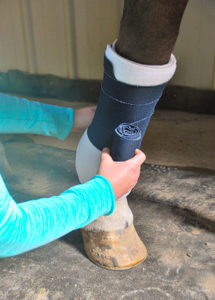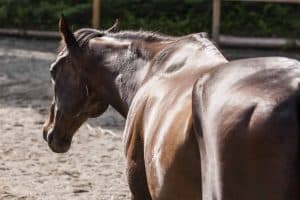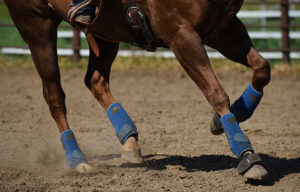Reducing Hindgut Acidosis
Acidosis (abnormally high acidity) in the hindgut (the large intestine and colon) can cause a number of problems in horses, including anorexia, colic, laminitis, and stereotypic (continuous, repetitive, and serving no purpose) behaviors such as
Acidosis (abnormally high acidity) in the hindgut (the large intestine and colon) can cause a number of problems in horses, including anorexia, colic, laminitis, and stereotypic (continuous, repetitive, and serving no purpose) behaviors such as wood chewing and weaving. Unfortunately, this is often a risk when feeding today’s rich concentrate feeds, and it all goes back to the evolution of the horse’s digestive system. That system was designed to process large amounts of high-fiber, poor-quality forage, rather than today’s richer diets.
At the 2007 American Association of Equine Practitioners Convention, held Dec. 1-5 in Orlando, Fla., Joe Pagan, PhD, president of Kentucky Equine Research in Versailles, Ky., presented the results of a study evaluating the efficacy of a protected sodium bicarbonate product in fighting hindgut acidosis. This problem is common in dairy cattle on high-grain diets, he noted, and sodium bicarbonate is often fed to combat the resultant drop in feed intake and milk production.
“Unfortunately, in horses raw sodium bicarbonate never makes it to the hindgut; it just buffers the stomach,” he noted. However, Kentucky Equine Research, along with Balchem Corporation, has developed a protected form of sodium bicarbonate (PSB, product name EquiShure) that was the focus of the current study.
Six 5-year-old Thoroughbreds in training on a high-speed treadmill were split into control and treatment groups and studied. One group was fed 168 g of EquiShure (100 g of sodium bicarbonate; the rest is the encapsulation agent) daily for a four-week period, then the other group received the same treatment (the treatment and control groups were swapped for the second study period). All horses received a diet of unfortified sweet feed, timothy hay, and 50 g of loose salt. Blood and fecal samples were collected every two hours for eight hours on Day 15 of each period, and during week four, all horses wore a complete collection harness for five days so fecal and urine contents could be analyzed
Create a free account with TheHorse.com to view this content.
TheHorse.com is home to thousands of free articles about horse health care. In order to access some of our exclusive free content, you must be signed into TheHorse.com.
Start your free account today!
Already have an account?
and continue reading.
Written by:
Christy M. West
Related Articles
Stay on top of the most recent Horse Health news with












